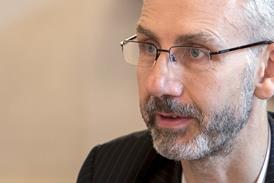- DHSC will release an additional £540m into the NHS England budget, on top of the £1.6bn already announced by the Treasury
- Provider trust sector expected to achieve breakeven in 2018-19
- “Sustainability and transformation fund” for NHS trusts will rise by £650m
- A similar “incentive” fund will be established for CCGs, worth £400m.
- £600m for CCG baselines expected to improve performance on elective and emergency care
Regulators have agreed to target financial balance for the provider sector next year, after the Department of Health and Social Care released a further £540m into NHS budgets.
The commissioning sector will also be expected to breakeven, following the introduction of a new £400m incentive fund for clinical commissioning groups that can meet their financial targets.
The new expectations have been set within planning guidance published by NHS England today.
It is not yet clear how the £540m is being made available by the DHSC, but it means that NHSE’s revenue budget will now grow by £2.14bn in 2018-19. This includes the £1.6bn of additional revenue from the Treasury that was announced in November’s budget.
Of the £2.14bn, £650m will be added to the £1.8bn “sustainability and transformation fund”, which is paid to providers that meet their financial targets. Trusts’ financial targets, known as control totals, will be amended to reflect a combined improvement of £650m.
Meanwhile, a similar payment mechanism will be introduced for CCGs, with £400m available for CCGs “that would otherwise be unable to live within their means for 2018-19”.
The document says CCGs in deficit will be eligible to access this money, with their allocation set to “bring the CCG back to a position of in-year financial balance as long as the in-year control total is delivered”.
Both sectors will be expected to deliver financial balance with the additional money, which means that around half of next year’s uplift in funding is being used to support the bottom line.
In 2017-18, the trust sector has forecast a year-end deficit of around £623m, while CCGs are expected to report an overspend of around £500m.
The document adds: “Despite these additional resources, delivering our objectives including financial balance will still require considerable efficiency improvements and other savings to be secured by CCGs, providers and sustainability and transformation partnerships.”
Given the levels of non-recurrent savings which have boosted the reported position of the provider sector in recent years, there is still likely to be a significant underlying deficit after the new funding is applied, and similar efficiency requirements.
The planning targets assume that any pay rises above 1 per cent for NHS staff would be separately funded by the government. The documents also say that NHSE and NHS Improvement “are both clear that no extra in-year funding is available for ‘winter’ 2018/19 over and above these allocations”.
Of the other half of the £2.14bn, £600m will be distributed to all CCGs “in proportion to a CCG’s overall fair share of funding according to the target allocation formula”, while CCG will no longer have to hold back 0.5 per cent of their budgets as a “risk reserve”, releasing a further £370m.
CCGs will need to use these extra resources to fund additional elective activity necessary to stabilise waiting lists, “realistic levels” of emergency activity, universal adherence to the mental health investment standard, and transformation commitments for cancer services and primary care.
Around £350m has been allocated to specialised commissioning budgets, with £130m for other directly commissioned services, such as dental and optical services, central transformation projects, and continuing healthcare provisions.
The additional £540m means NHS England’s funding growth will be 2.4 per cent in real terms next year, compared to the expected growth of 1.9 per cent. The age-weighted revenue growth per person becomes 1.4 per cent, instead of 0.9 per cent.
Source
NHS England planning guidance
Provider sector expected to balance as DHSC finds extra £540m
- 1
 Currently reading
Currently readingProvider sector expected to balance as DHSC finds extra £540m
- 2
- 3
- 4
- 5
- 6































6 Readers' comments